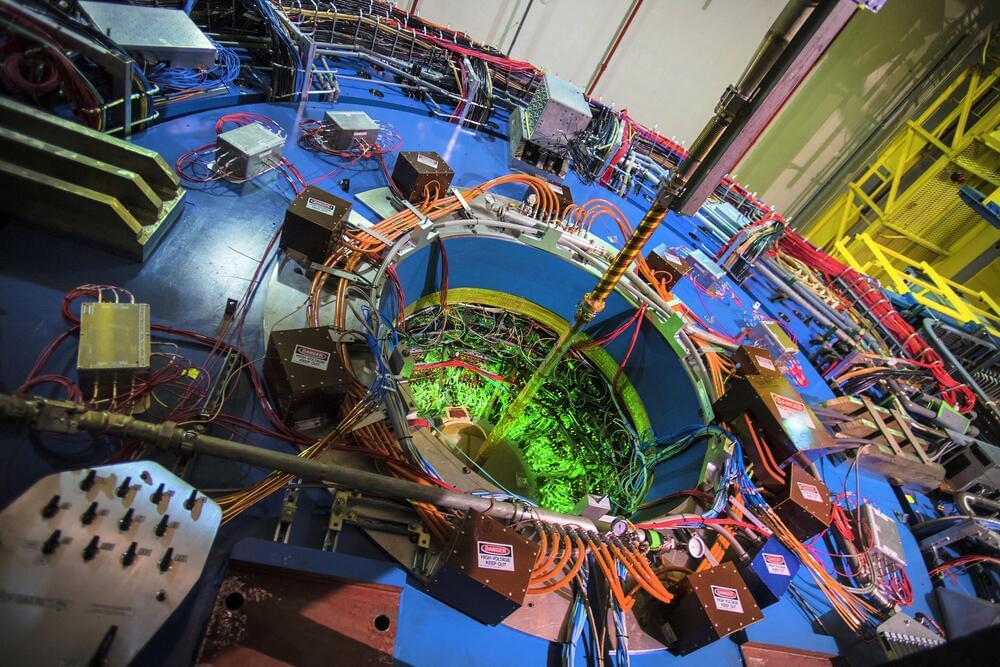Nuclear physicists have found a new way to use the Relativistic Heavy Ion Collider (RHIC)—a particle collider at the U.S. Department of Energy’s (DOE) Brookhaven National Laboratory—to see the shape and details inside atomic nuclei. The method relies on particles of light that surround gold ions as they speed around the collider and a new type of quantum entanglement that’s never been seen before.
Through a series of quantum fluctuations, the particles of light (a.k.a. photons) interact with gluons—gluelike particles that hold quarks together within the protons and neutrons of nuclei. Those interactions produce an intermediate particle that quickly decays into two differently charged “pions” (π). By measuring the velocity and angles at which these π+ and π- particles strike RHIC’s STAR detector, the scientists can backtrack to get crucial information about the photon—and use that to map out the arrangement of gluons within the nucleus with higher precision than ever before.
“This technique is similar to the way doctors use positron emission tomography (PET scans) to see what’s happening inside the brain and other body parts,” said former Brookhaven Lab physicist James Daniel Brandenburg, a member of the STAR collaboration who joined The Ohio State University as an assistant professor in January 2023. “But in this case, we’re talking about mapping out features on the scale of femtometers —quadrillionths of a meter—the size of an individual proton.”
